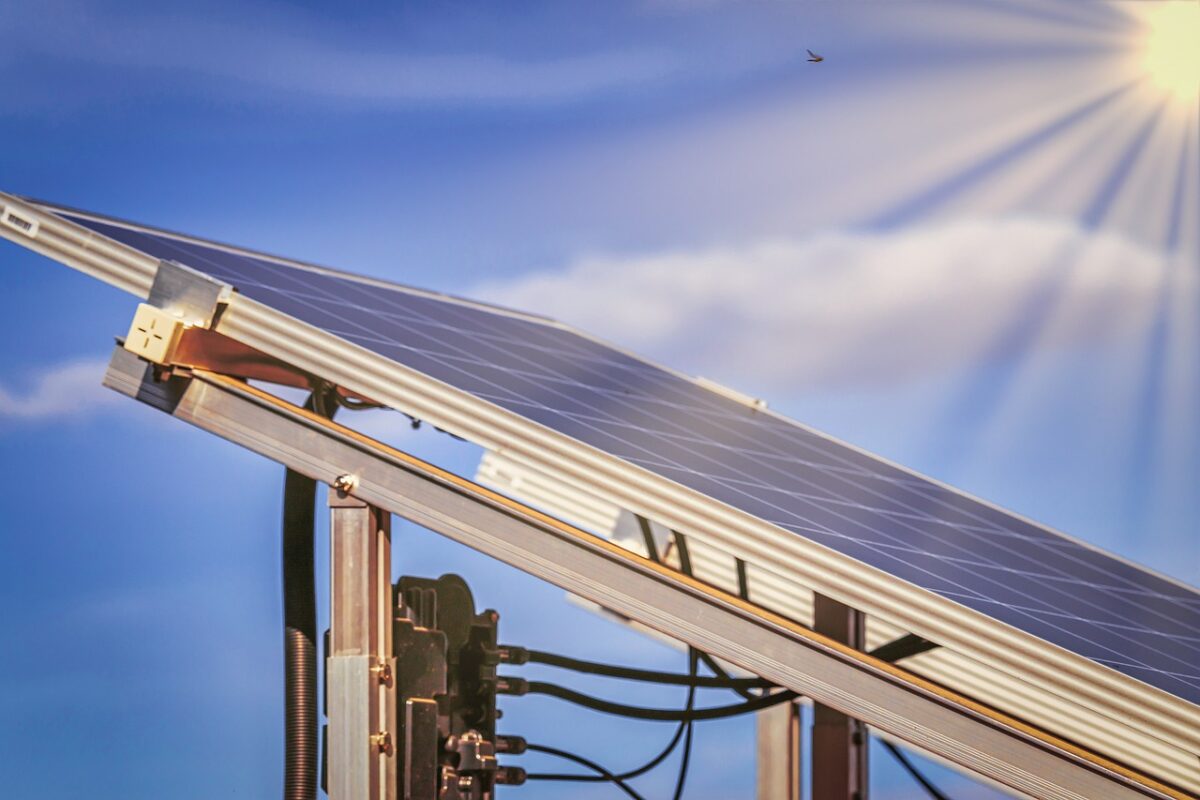An international group of researchers has analyzed the optimal tilt angle for agrivoltaic (APV) systems in Mediterranean climate and mid-latitude regions. They have run a series of simulations on a 175 m2 system in the Turkish capital, Ankara.
“The analyzed values can be used in the central Mediterranean region of similar latitude and climatic conditions (Csb) and different regions of the world,” they explained. “The main ones are Portland in the USA, Braga in Portugal, Valladolid in Spain, Terni in Italy, and Žabljak in Montenegro.”
The academic group explained that optimal tilt can help both energy production and crop yield, as the PV panels partially shade the crops, protecting them from excessive heat. Some crops, such as tomato, potato, and garlic, are known to have better yield with shading, while others, such as rice, peanut, and okra, need more sunlight.
“The study's originality lies in the design of an APV system as an alternative solution to the rising energy-related food costs. The aim is to reduce the impact of operational costs on agricultural activities and promote sustainability, particularly in rural areas,” they said.
To conduct their simulation, the scientists first calculated the optimal tilt angle for Ankara in terms of power production. They found the annual average to be between 31 degrees and 33 degrees. The seasonal optimum slope angle for the winter was 55 degrees, for spring was 20 degrees, for summer was 7 degrees, and for autumn was 45 degrees.
Taking these values into account, they then created eight scenarios with different tilt angles and calculated their effect on crop yield and energy production. The scenarios are based on the following parameters: yearly average (M1); latitude 39.57° (M2); horizontal installation (M3); vertical installation (M4); winter optimum tilt angle (M5), spring optimum tilt angle (M6); summer optimum tilt angle (M7); and autumn optimum tilt angle (M8).
“In the design of the APV system, a 12.0 kW h DC power capacity was installed with 40 units with 300 Watt PV panels,” they added. “A 3 m gap is left between each PV array, and shading is considered ineffective. The height of the panels from the ground is assumed to be 3.6 m, and an APV design was made in accordance with international standards, with a width of 10.5 m and a length of 16.5 m, totaling 175 m2.”
The simulation was conducted assuming the utilization of standard crystalline silicon with an efficiency of 19%, premium crystalline silicon with an anti-reflecting cover of 21% efficiency, and cheaper thin-film PV modules with an efficiency of 18%. The crops under them were simulated as turmeric, olive, winter cabbage, kiwifruit, corn, lettuce, and bok choy.
The academics ascertained that the M1 scenario with thin-film panels offers the highest performance with an annual financial gain of $1,286 and AC electricity generated of 15,674 kWh. The lowest performance, by contrast, was achieved in the M4 scenario with thin film panels, with the financial gain being estimated at $775 and AC electricity at 9,438 kWh.
The researchers also detailed the land equivalent ratio (LER). LER is a method used to measure land use efficiency for the simultaneous production of crops and electricity. They found the highest capacity factor to be for growing kiwi under the M1 scenario and the lowest for growing bok choy in M4 conditions.
“As of 2023, the discounted payback period (DPBP) value for the M1 model is 15.8 years, while the M4 model fails to meet the investment cost. By 2035, the DPBP value for the M1 model decreases to 7.8 years, while for the M4 model, it becomes 13.6 years. In 2050, the DPBP values are 5.4 years for the M1 model and 10.1 years for the M4 model,” they found.
Their results were presented in “Solar collector tilt angle optimization for agrivoltaic systems” and published in Case Studies in Thermal Engineering. The scientists behind the research are from Turkey's Batman University, Australia's James Cook University, Hungary's University of Pannonia, and ELTE Eötvös Loránd University.
This content is protected by copyright and may not be reused. If you want to cooperate with us and would like to reuse some of our content, please contact: editors@pv-magazine.com.



2 comments
By submitting this form you agree to pv magazine using your data for the purposes of publishing your comment.
Your personal data will only be disclosed or otherwise transmitted to third parties for the purposes of spam filtering or if this is necessary for technical maintenance of the website. Any other transfer to third parties will not take place unless this is justified on the basis of applicable data protection regulations or if pv magazine is legally obliged to do so.
You may revoke this consent at any time with effect for the future, in which case your personal data will be deleted immediately. Otherwise, your data will be deleted if pv magazine has processed your request or the purpose of data storage is fulfilled.
Further information on data privacy can be found in our Data Protection Policy.